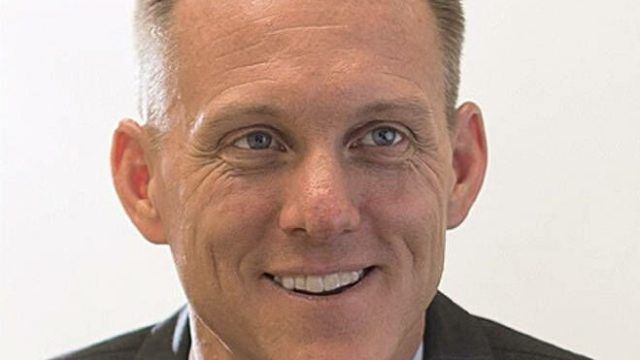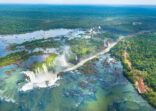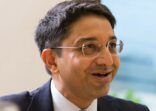Christopher Lees, JO Hambro Capital Management
Ineluctable trends include a shift towards factory automation, supply chain diversification, clean and green manufacturing, the circular economy (recycling), sustainable growth and online services, and away from dirty energy and resources, as well as sectors such as airlines and hotels, now that country lockdowns have shown the viability of some non-physical alternatives, he told investors in a webinar this week.
“Software, semiconductors and data are replacing oil, steel and cement,” said Lees, who co-manages with Nudgem Richyal JO Hambro Capital Management’s $1.48bn Global Select Fund.
According to Singapore-based Lees and Richyal, who have been working remotely and apart since 10 February, they have incorporated exclusion-based socially responsible investing in their “four dimensional investment process”, comprising stock, sector, country and improvised selection, for twenty years, and positive-screening ESG for the past decade.
“Essentially, we are looking for the new companies to invest in for the post-coronavirus ‘new normal’,” said Lees.
The next decade will require investors to rethink several of their assumptions, he argued.
“They must distinguish between genuine and fake value, realise that ESG is a major driver of risk and rewards, not just a box-ticking exercise, and understand that traditional precepts about risk control and diversification embedded in modern portfolio theory don’t work when you most need them,” said Lees.
Identifying and profiting from ‘big picture” trends is a theme shared by other JOHCM funds, including the JOHCM Asia Ex Japan Fund, whose manager Samir Mehta told FSA last year that he was focusing on companies that had embraced new technologies to boost sales.
In December 2019, the UK firm poached Federated Hermes’s impact investing team, who target companies in nascent industries that they believe will grow their business models to become mainstream leaders in the future.
Watching high leverage
The Global Select Fund, which is available to Singapore retail investors, has achieved a 16.32% three-year cumulative return, generating alpha of 3.49 and outperforming its MSCI ACWI benchmark (8.15%) and the international equity sector average (3.64%), according to FE Fundinfo data.
Its 18.15% annualised volatility is higher than both the index (17.47%) and the sector average (16.02%), but the fund has been relatively resilient during the past three months.
The fund is down 12.25% so far this year (to 7 April), which is better than its peers (-18.61%) and its benchmark (-20.10%).
Lees attributes its performance to avoiding cyclical companies with large debts, especially banks, and he intends to continue to keep away from companies with highly leveraged balance sheets.
“Governments throughout the world are injecting cash into struggling companies, which will have to deleverage their balance sheets as part of the deal in the years to come, rather like banks were forced to do after their bailouts during the global financial crisis. Contracting balance sheets are unlikely to generate strong earnings growth,” he said.
The fund is currently overweight technology and healthcare sectors, and to emerging Asia and Japan. It is underweight the materials and energy sectors, and this year shifted its exposure to the US to neutral from underweight.
“We haven’t bought any new stocks since the crisis began, although we ‘weeded out’ fundamental losers, such as Rio Tinto, and trimmed relative winners early on, which lifted our cash level to 10%,” said Lees.
“Weeding out the losers limits the damage of value and growth traps, and is an efficient way to exploit momentum,” he explained.
Subsequently, the fund topped up its holdings back to its model weightings and cash is now down to 5%.
Bull and bear scenarios
Lees believes there is a 60% chance of an economic recovery in 2021 accompanied by a “tremendous bull market” and a 40% likelihood of a 1930s-type global depression and a protracted bear market. The 60% recovery scenario is broken down into 50% for an equity market bounce led by the same growth, quality and technology types of stocks that his fund contains, and 10% by deep value and cyclical stocks that it avoids.
“It depends on whether the policy response from governments and central banks is sufficient, which would mean a long period of low interest rates, large amounts of fiscal spending and the provision of universal income,” said Lees.
The tipping point one way or the other will be signaled by the collective wisdom of markets, rather than lagging macroeconomic data, according to Lees.
“Credit spreads, the relative performance of high and low beta stocks, and flows into risk-on or risk-off securities will indicate whether the global economy is going to recover or slide,” he said.
However, he advises investors against trying to pick the bottom of the market.
“Don’t try to ski in an avalanche,” he said.
JOHCM Global Select Fund vs MSCI ACWI and international equity sector average


















